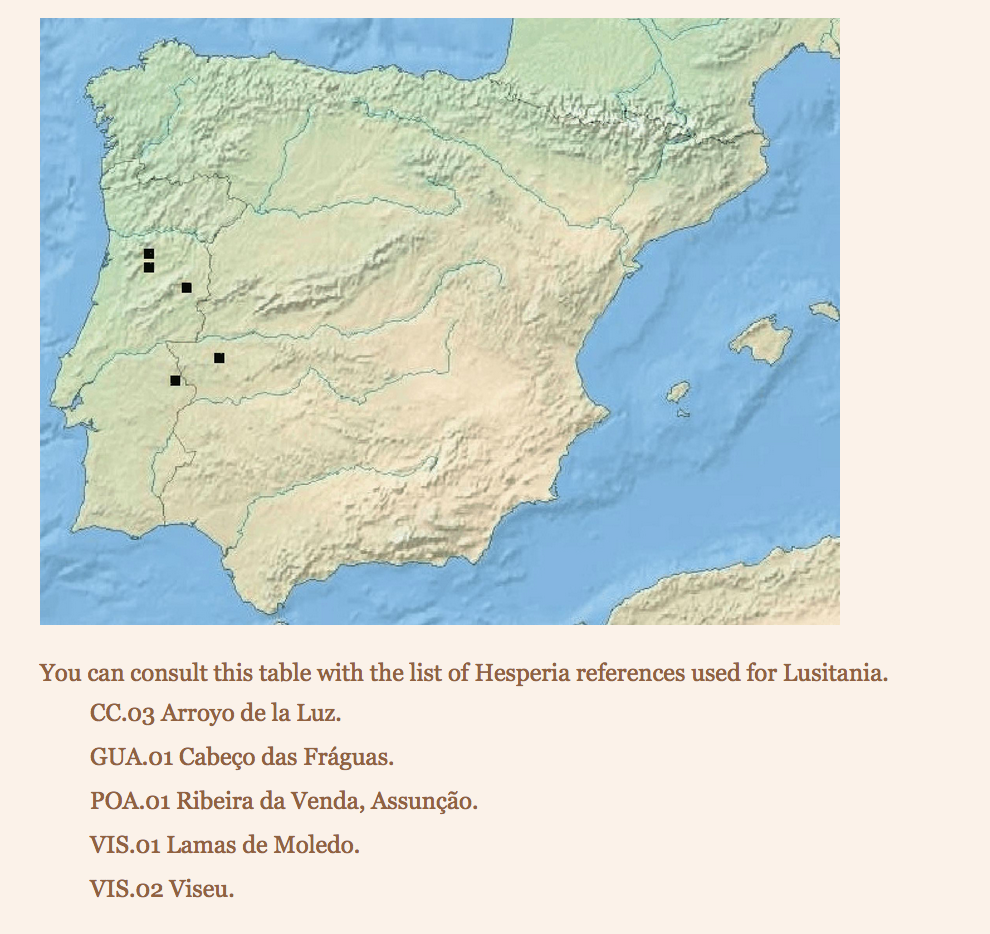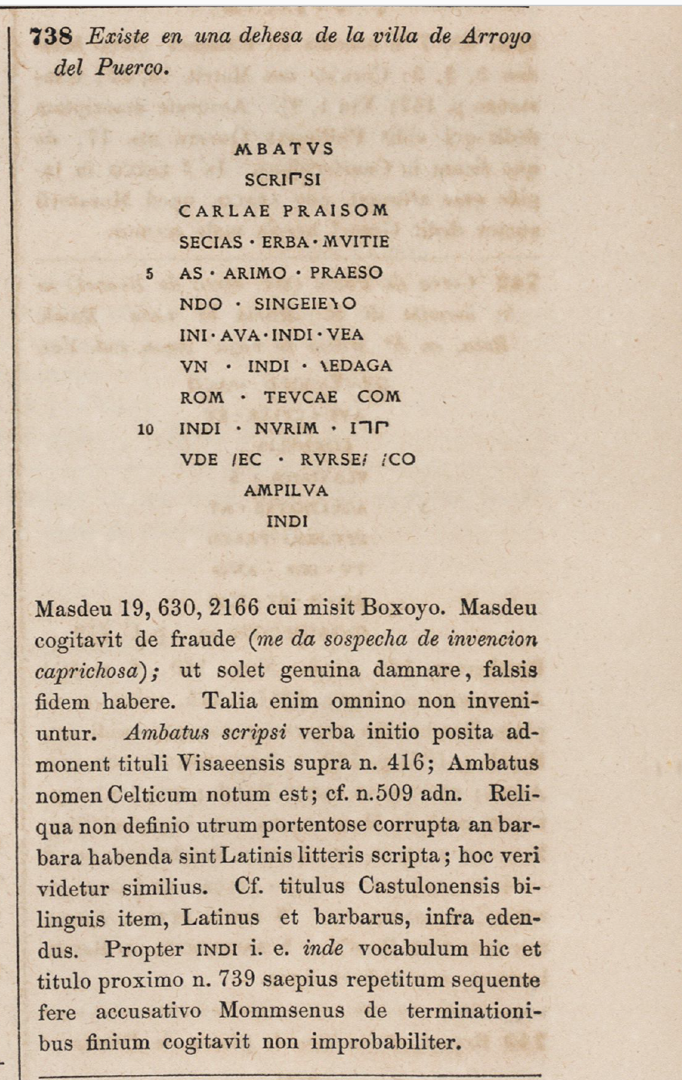By Noemí Moncunill Martí
In 2009 one of the nicest inscriptions showing the multilinguistic situation of the Iberian Peninsula at the beginning of our era was found in Viseu, in the province of Lusitania (in modern-day Portugal). The text was carved in elegant capital letters on an altar and, at first sight, and without paying close attention to its specific content, one would say this is just another Latin votive inscription concluding with the formula V(otum) S(olvit) L(ibens) M(erito). However, any Latinist who tries to read and understand the text will immediately become aware of its exceptionality: as a matter of fact, the inscription is not entirely in Latin, but half of it has been written in an indigenous language, Lusitanian. The inscription reads as follows:
DEIBABOR
IGO
DEIBOBOR
VISSAIEIGO
BOR
ALBINVS
CHAEREAE
F
V S L M

Fig. 1. Votive inscription from Viseu (HEp, 17, 255). Image in Creative Commons, taken from Banco de Datos Hesperia (Palaeohispanica 2009).
The first part of the text, Deibabor igo deibobor Vissaieigobor, has been interpreted as an address, in dative plural, ‘to the goddesses and gods of Visseu’, which would be the indigenous adaptation of the common Latin formula Diis deabusque. Linguists actually consider that this indigenous declination in -BOR is likely to be a rhotacized form of an ancient ending *-bos (which would be much closer to the Latin –bus); note that Latin and Lusitanian show actually some resemblances, due, of course, to the fact that they are both Indo-European languages. What interests us more here is that, after this invocation to the divinity, the text suddenly switches to Latin in order to express the naming formula of the commissioner –Albinus Chaereae filius–, and the final formula: V(otum) S(olvit) L(ibens) M(erito).
 Fig. 2. Map of the Lusitanian inscriptions according to Hesperia Database.
Fig. 2. Map of the Lusitanian inscriptions according to Hesperia Database.
This inscription from Viseu is the last find of a very small corpus of texts in Lusitanian language, which comprises, in total, only 6 inscriptions, all of them having a votive or sacrificial character. In addition to the direct sources, we also have access to a large number of place names, personal names and divinity names which survived in Latin epigraphy, and also to some other hybrid or mixed inscriptions, in which, interestingly, there is also a retention of the local declination to mention the indigenous gods, whereas the names of the commissioners and the votive formulae are, again, in perfect Latin. For instance: Deibabo Nemucelaegabo Fuscinus Fusci f(ilius) v(otum) l(ibens) a(nimo) s(olvit) (AE 1987, 562g). As for the inscription of Viseu, this could correspond to a residual or fossilized use of the indigenous language for religious purposes.

Fig. 3. One of the first known Lusitanian inscriptions as published in the first edition of Corpus Inscriptionum Latinarum devoted to Hispania (CIL II 738). E. Hübner, the editor of the corpus, considers that the inscription is not a fake, as it had been judged before, but a corrupt or barbarian text in Latin letters: « portentose corrupta an barbara habenda sint Latinis litteris scripta ».
Until the late 20th century the only two known Lusitanian inscriptions had been considered as local inventions, texts in bad Latin or just as fake documents. The latter discoveries, although scarce in number, have been of great importance in order to progress in the typological classification of this language and to recognize some of its specific features. Thanks to these new discoveries Lusitanian has aroused interest between linguists and historians and its documentation is today considered as a key element for the understanding of the very different ways in which the local populations integrated themselves into the Roman world.
Further reading :
D’Encarnação and A. Guerra, 2010: “The current state of research on local deities in Portugal”, in: J. A. Arenas (ed.), Celtic religion across space and time, Toledo 2010, pp. 95-112.
M. J. Estarán, Epigrafía bilingüe del Occidente romano. El latín y las lenguas locales en las inscriptionces bilingües y mixtas, Zaragoza 2016, pp. 250-281.
Hesperia Databank (Lusitanian): http://hesperia.ucm.es/en/presentacion_lusitano.php
J. Untermann, Monumenta Linguarum Hispanicarum Monumenta, vol. IV, Wiesbaden 1997.
M. Vallejo Ruiz, Antroponimia indígena de la Lusitania romana, Vitoria 2005.
M. Vallejo, “Hacia una definición del lusitano”, Palaeohispanica 13, 2013, pp. 273-291.
D. Wodko, Lusitanian. Language, writing, epigraphy, Zaragoza 2017.